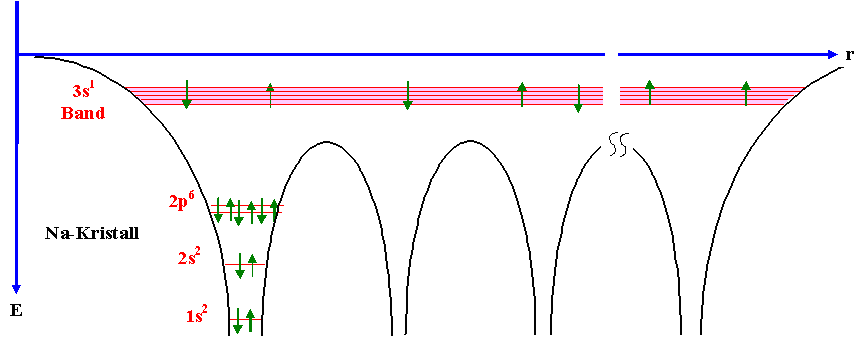I am trying to understand the basics physics as to how electricity works.
Unfortunately it seems most online material is either complex full blown mathematical equations, or water pump analogies.
I am interested in what happens at the single electron level. I guess i should start from what i think i understand.
Please correct me if any of my assumptions are wrong.
Energy Flow:
Different materials are made from molecules, those molecules are made from different atom types. Those atoms arrange themselves in in different configurations: ordered(called crystalline), random(amorphous), and a combination of both (Poly-crystalline).
The crystal is defined by a lattice and a basis. The lattice is a mathematical representation of points in space, and the basis is a "pattern" that gets pasted on each lattice point. The "pattern" is 1 or more atoms. The crystals are bound together by different types of bonds (ionic, covalent).
Since the lattice is just a representation, there is no meaning to start / end point, making the lattice have translational symmetry. Auguste Bravais discovered there are only 14 ways you can rearrange the lattice and keep translational symmetry.
Naturally crystals are formed when liquid cools down, since it happens in many locations and at different orientations, mostly poly-crystalline are formed. There are several crystal growth methods to create own more perfect crystals.
Each atom has an electron configuration, and has several different shells / levels of energy. There can be 2n^2 electrons per level. The lower the level the higher energy needed to bump the electron to the next level (because is closer to nucleus - where the protons are).
When arranging several atoms together, due to pauli exclusion principle (convoluted quantum mechanical principle that states two fermions(electrons) can not have the same quantum state) the atoms can not have the electrons at exactly the same energy level, forcing them to change slightly, split and spread into energy bands.
Conductivity determined by number of free electrons in the conductor that are free to move around. (more later)
The highest energy band available for material is called valence band. The next band is called conduction band. The conductivity is affected by the number occupied of electrons in valence band and the band gap between the valence to the conduction band. (more now)
If the valance band is half filled, there is room for the electrons to move resulting in high conductivity (metals). If the band is full, but the band gap to the conduction band is small enough so electrons can be excited to the next band where they can move and there is conductivity(semi conductors).
In insulators the valance band is full and the gap is too big, and an electron cant carry enough thermal energy to bump other electron through this gap.
Thus, the lattice, crystal structure and atom properties affect the band distribution which affect the number of free electrons.
When applying electric field on a wire, a force is applied to all the electrons, making them accelerate. Mean free path and mean free time represent the length & time on average before a collision happens with other atom / electron / material impurities etc. All of those collision, stopping and pushing, contribute to the net directional drift velocity of the electron as it moves in the conductor.
drift velocity = current.
voltage drop = energy used for exciting electrons over the gap.
When connecting current, to a circuit, due to the voltage (potential) difference at the start to the end, electrons start to flow. If there is no resistance, enormous current (as per ohm's law) flows, resulting in short circuit which burns(?)
For the circuit not to short, you must add resistance. By adding infinite resistance (say by cutting the wire so the medium is now air between the two) it is called open-circuit.
Also when using resistor need to take into account power dissipation using the power law. Most(?) resistors are only rated for 0.25 watt dissipation .
How is electricity generated?
Spinning a magnet with some properties of strength, physical size etc, which are summed up as magnetic flux (X), around / between a coil (Y) with some properties of length, resistance, number of turns. Using Faraday's law of electromagnetic induction you can calculate the voltage generated in the coil. The bigger the flux, the faster you spin it, the more coil, all result in higher voltage. (lets assume eventually DC current is produced)
Q: How long does this voltage last? Is because the more current drawn at this voltage, the magnetic reluctance is increased inside the coil due to electrons movement making in harder to spin the magnet? How is chemical battery affected?
Sources:
ecee.colorado.edu/~bart/book/book/contents.htm
britneyspears.ac
MIT 802 (non atomic theory + equations)
MIT 2.57 (atomic / quantum equations mostly, some theory).
en.wikipedia.org/wiki/Classical_and_quantum_conductivity

